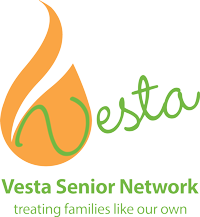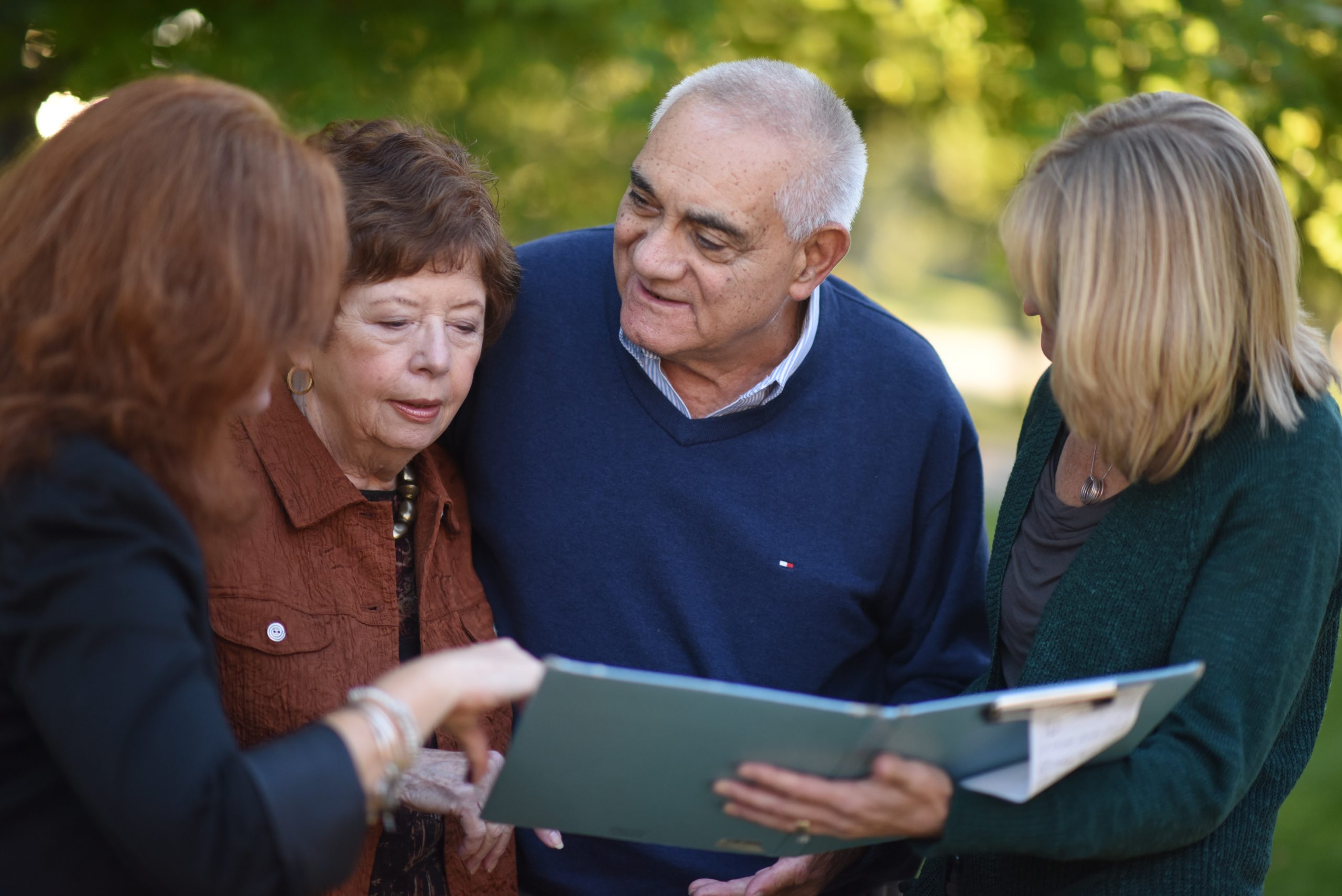Each year, September not only ushers in the fall season, but with the start of the fall season begins Falls Prevention Awareness Week. If you are an older adult or a caregiver, here’s why you should pay attention.
- One in three older adults falls each year.1
- 95 percent of hip fractures in older adults result from falls, and falls are the leading cause of traumatic brain injuries.2
- Emergency room services treat three million injuries from falls each year. This leads to 850,000 hospitalizations and 29,000 deaths.3
The National Council on Aging has called falls among older adults a “growing public health issue.”4 Often one fall can lead to a cascade of negative health outcomes, a fear of falling again, and repetitive falls. Indeed after falling once, your risk of falling again doubles.5
However, this aging trajectory is not inevitable. Falling is not – and should not – be characterized as a normal part of aging. Both caregivers and older adults can take proactive steps to decrease your risk of falls. This is the message that the National Falls Initiative seeks to deliver through Falls Prevention Awareness Week.
One Woman’s History of Falls
Before we dive into strategies and tips for preventing falls, let’s take a look at one woman’s history of falls and the resulting decline in her health.
Betsy was a healthy, active 72-year-old woman when she fell the first time. She had worked until the age of 70 and in her retirement was enjoying time with friends and travel. The fall occurred in her home, not far from the bathroom. Betsy, who lived alone, had experienced vertigo before the fall, a symptom later linked to a mini-stroke.
Betsy lay on her floor for several hours, unable to get up on her own. Fortunately, her son happened to stop by that day and found her. At the hospital, the news was not good. Betsy had broken her back. She was given pain medication but next, suffered another stroke.
After recovery and rehabilitation, Betsy continued to live in her home. At this point, she used a walker, and getting around her property was not as easy as it had been before the fall. Steps led to her outside door, her driveway was sloped, and she needed assistance with tasks inside the home. A few of her children lived nearby and were able to help her with daily tasks, but it became clear that she would need more than they were able to provide in the long term.
Eventually, Betsy moved into an independent living apartment. She fell a second time, once again breaking her back. At least this time, help was nearby, so she did not have a “long lie” as she had the first time. However, she developed a condition called trigger finger, limiting her ability to grip things – like safety bars in the bathroom.
This led to a third fall, this time in an assisted living community where Betsy had moved. Betsy fell while in the bathroom with a caregiver present. She was again transported immediately to the hospital.
Unfortunately, Betsy’s story is not unique. She is one of approximately 36 million older adults who fall every year.6 Many of these older adults are unable to get up on their own. Although one hour of lying on the floor after a fall is one hour too many, some lie for even longer hours, even days. The amount of time or “lie time” that someone lies on the floor without help correlates with a person’s health outcomes. One study showed that the mortality rate from falls is 67 percent when lie times are 72 hours or more. In comparison, the mortality rate is 12 percent when lie times is an hour or less.7
Falls come quickly and without warning. And a first fall can often lead to a fear of falling again. This is why it makes it so important to find ways to decrease the risk of falls. This fear keeps some older adults from participating in activities they previously enjoyed, which in turn can lead to depression or a more sedentary lifestyle. Unfortunately, this increases one’s risk of falling even more. In the case of Betsy, not only did she fear falling again, she was unable to do many things, like tasks around the house, because of her fall-related injuries and stroke. This further weakened her physical condition setting her up for another fall.
At this point, many families like Betsy’s begin to weigh the pros and cons of a long-term care community versus aging in place, perhaps supported with home health care services.
Fall Prevention Awareness
One way to prevent a fall is by becoming educated about risk factors. From the Falls Prevention Awareness Week website, older adults and caregivers can access a digital screening tool called the Falls Free Checkup. This self-assessment requires you to respond to 12 yes/no statements. For example, “I steady myself by holding on to furniture.” And, “I have some trouble stepping onto a curb.” Respondents are emailed with an analysis of their fall risk that includes explanations of why certain factors put them at a higher risk. Scheduling an appointment with your primary care doctor and requesting a falls risk assessment is another great first step towards reducing your risk.
Fall Prevention at Home
After receiving an assessment, consider taking some practical steps towards making your home, if not fall-proof, at least fall-safe. One study found that as many as 55 percent of falls occur inside the home, and another 23 percent of falls occur outside but near the home.8 The home environment is a great place to make some improvements!
A few adaptations that will help decrease your risk of falls include the following.
Floors and Stairs
- Ensure that your floors or those of your loved ones are clutter-free.
- Remove throw rugs or secure them to the floor with double-sided tape.
- Increase your home’s lighting including at the top and bottom of staircases.
- Add nightlights to bathrooms, bedrooms, and hallways.
- Install two secure rails to all stairs, inside and out.
- Replace thresholds with thin transition strips.
Bathrooms
- Add grab bars to a tub or shower and near a toilet.
- Add non-slip strips or a rubber mat to a tub or shower.
- Add a shower chair with non-slip feet and a handheld showerhead.
- Install a no-step shower or no-step tub.
- Use a weighted shower curtain to reduce water seepage onto the floor.
- Purchase an ADA-accepted raised toilet or attach risers to your existing toilet.
If you or an older loved one wants to age in place but has some physical limitations, Vesta Senior Network is available to help. We offer educational programs to employers, groups, and organizations including one on aging in place. We understand the daily challenges that older adults and their families face because we live it, too. After all, Betsy is the mother of Vesta eldercare consultant, Courtney Russell.
Fall Prevention Through Wellness
Maintaining health and wellness goes a long way towards reaching the goal to decrease your risk of falls. Consider a regular exercise program if you don’t already have one. While it is true that we lose muscle as we age, exercise can partially restore strength and flexibility. Walking, swimming, or water exercise are great options for older adults. Tai chi or qi gong, two traditional Chinese practices, can help improve mobility, balance, strength, flexibility, and self-confidence in being on your feet.
Falls prevention programs can also be found in many communities through local area agencies on aging, senior centers, the YMCA, or health clinics. The programs sometimes include an exercise component, strategies for preventing falls, and coping mechanisms to overcome the fear of falling. Research shows that one workshop offered in Wisconsin, Stepping On, has helped reduce falls by 31 percent.
Other measures for maintaining wellness include getting your eyes and hearing checked regularly, and wearing eyeglasses and hearing aids as prescribed. A deficit in either vision or hearing increases your risk for a fall. A review of medications can be beneficial, too. Side effects of some prescribed medicines include fatigue and dizziness.
One other thing to consider is a medical alert device. If worn consistently, you will always have access to emergency help by the press of a button. In addition, many devices now include fall detection. This means that if you fall and are unable to press a button due to unconsciousness or confusion, an alert will automatically be sent to an emergency monitoring center, which will quickly evaluate the situation and contact local EMTs if necessary.
Fall Prevention Tips for Caregivers
When our parents or other older loved ones are active and relatively healthy, falls are often the furthest things on our minds. But it is while they are independent that you as a family member may be able to help the most. Initiating a conversation about falls prevention can go a long way towards keeping them safe and healthy. And if your loved one has fallen, the conversation becomes even more important. Still, it might not be an easy conversation to have.
The National Council on Aging offers several tips for beginning this important discussion. First, educate yourself prior to sitting down with your loved one. Be thoughtful of the words that you choose and the way that you describe any changes that you have noticed, knowing that some may view the conversation as an intrusion on their privacy and independence, or a suggestion that they are frail. In addition, be mindful of the person’s communication style and preferences. Keep it positive in tone and body language. And finally, know that any conversation that you start may need to be repeated again or even several times. Everyone adjusts to new circumstances at different paces.
As evidenced by Betsy’s story, falls can happen in a long-term community just as they can happen in a private home. Making adjustments to your living environment and attending to your wellness is important regardless of where you live. Finding ways to decrease your risk of falls can be the life and death difference. So, too, is putting measures in place to ensure that if you do fall, help can be accessed quickly. For some, this may be frequent check-in calls from family members and/or a medical alert system. For others, the time may come when the safest option may be moving into a long-term care community where, even if a fall takes place, assistance is always a few steps away.
If you have any questions on how to decrease your risk of falls, please feel free to contact us today. We will be happy to give you more information & we are always ready to help your find assisted living for your loved one.
Resources
1 https://www.nia.nih.gov/health/prevent-falls-and-fractures
2 https://vimeo.com/583534200
3 https://www.ncoa.org/article/get-the-facts-on-falls-prevention
4 https://www.ncoa.org/article/get-the-facts-on-falls-prevention
5 https://www.cdc.gov/homeandrecreationalsafety/falls/adultfalls.html
6 https://www.cdc.gov/injury/features/older-adult-falls/index.html
7 https://www.nejm.org/doi/full/10.1056/NEJM199606273342606
8 http://stopfalls.org/


